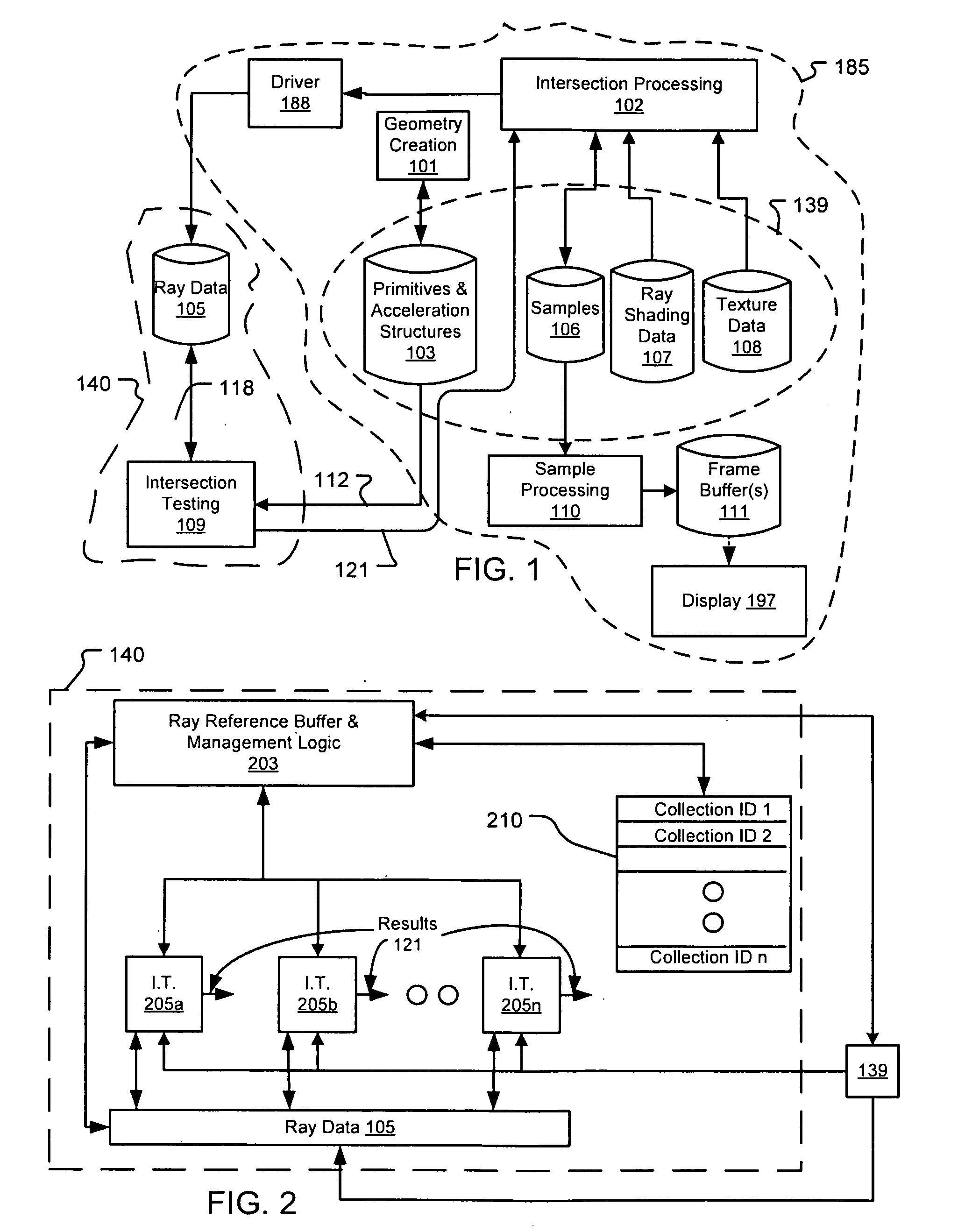Architectures for parallelized intersection testing and shading for ray-tracing rendering
a parallelized intersection and rendering technology, applied in the field of rendering two-dimensional representations from three-dimensional scenes, can solve the problems of computational complexity, large time consumption of workstations, and high computational complexity of testing 1024768 (for example) rays for intersections with millions of triangles
- Summary
- Abstract
- Description
- Claims
- Application Information
AI Technical Summary
Benefits of technology
Problems solved by technology
Method used
Image
Examples
Embodiment Construction
[0060]The following description is presented to enable a person of ordinary skill in the art to make and use various aspects of the inventions. Descriptions of specific techniques, implementations and applications are provided only as examples. Various modifications to the examples described herein may be apparent to those skilled in the art, and the general principles defined herein may be applied to other examples and applications without departing from the scope of the invention. This description first proceeds by introducing aspects relating to an example of a three-dimensional (3-D) scene (FIG. 1), that can be abstracted with geometry acceleration data, as in the example of FIG. 2. Such a 3-D scene can be rendered as a two-dimensional representation with systems and methods according to the examples illustrated and described.
[0061]As introduced in the background, a 3-D scene needs to be converted into a 2-D representation for display. Such conversion requires selecting a camera...
PUM
 Login to View More
Login to View More Abstract
Description
Claims
Application Information
 Login to View More
Login to View More - R&D
- Intellectual Property
- Life Sciences
- Materials
- Tech Scout
- Unparalleled Data Quality
- Higher Quality Content
- 60% Fewer Hallucinations
Browse by: Latest US Patents, China's latest patents, Technical Efficacy Thesaurus, Application Domain, Technology Topic, Popular Technical Reports.
© 2025 PatSnap. All rights reserved.Legal|Privacy policy|Modern Slavery Act Transparency Statement|Sitemap|About US| Contact US: help@patsnap.com



